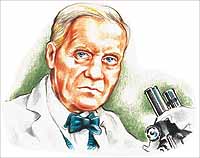Northern Population
More than half of Italy’s population is concentrated in the northern part of the country, which accounts for one third of its territory. Furthermore, 67% of its citizens live in cities.
From 1960 onwards, immigration began to overtake emigration as Eastern Europeans began to arrive as did Arabs and Latin Americans. However, 90% of its residents are of Italian descent.
Although Italian is the official language, 33 other languages and dialects are spoken in this country.
A Mountainous Country
Italy is bounded to the northwest by France, to the north by Switzerland and Austria and to the northeast by Slovenia. However, most of the country is a peninsula surrounded by the Adriatic and the Mediterranean seas. Its territory also comprises a number of islands, the most important being Sicily and Sardinia.
However, this country is characterised by the existence of three mountain chains that cross it: The Alps (which it shares with France and Switzerland), that include Monte Rosa, Italy’s highest peak (4,634 meters above sea level); the Apennine Mountains, which form Italy’s backbone (and stretch as far south as Sicily), and the Gennargentu Mountain Range, shared by the Italian island of Sardinia and the French island of Corsica.
The longest river is the Po, 652 km in length, which drains a fertile plain bounded by the Alps to the north and by the Apennines to the south.
Italy’s weather is characterised by dry summers and mild winters, although there are seven areas where temperatures vary according to altitude and latitude.
An Industrial Economy
Italy belongs to the G8, the group formed by the world’s most industrialised nations; around 10% of its population is employed in the industrial sector. Cars, trucks, heavy machinery as well as agricultural and transport machinery are among its most important industrial products. The textiles industry, the oldest in the country, also plays an important role, as do the shoe, petrochemical and food industries.
The «Country of the Boot», as it is also known, is one of the leading producers of wine and olive oil. Other important crops are cereals, fruit and vegetables. Livestock production includes mainly sheep and cattle.
Mining is not a particularly relevant sector in the Italian economy, although there are deposits of lead, bauxite, lignite, sulphur, iron and mercury (Italy is the world’s second largest exporter of this metal).
Italy relies on the importation of hydrocarbons, such as petrol, and coal in order to generate 80% of the electricity it consumes. The rest comes from hydroelectric dams.
Parliamentary President
The current Italian Constitution has been in effect since January 1948. The functions of the Executive are in the hands of the President (who is appointed by Parliament) and the Council of Ministers. The Legislative branch is formed by Parliament, the Senate (315 members) and the Chamber of Deputies (630 members).
The functions of the Judicial branch reside in the Supreme Court of Cassation, the Courts of Appeal, District Courts and the Justices of the Peace.
There is also a Constitutional Court (which is autonomous and has 15 members) that rules on the constitutionality of Italian laws. For administrative purposes, the country is divided into 20 regions and 105 provinces.
Venice
Venice, also known as the «City of the Canals», is the capital of the Veneto region. It was built on a number of islands located in a marshy lagoon off the Adriatic Sea. In the 13th century it was the main starting point for those embarked on voyages to the East, such as Marco Polo when he travelled to China. Nowadays, its beauty and charm draw nearly 18 million tourists every year.







 Alexander Fleming descubre la Penicilina
Alexander Fleming descubre la Penicilina